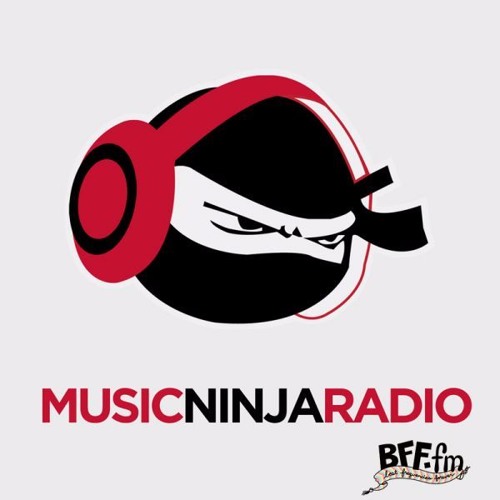
Danish production duo Kenton Slash Demon didn’t first appear on the pages of TMN until about a month ago, but they’ve been making waves in electronic music for over half a decade now. Across a series of EPs, Silas Moldenhawer and Jonas Kenton, the artists behind KSD, have displayed a versatility fueled by a passion for dance music of all kinds. Regardless of styles employed or influences evoked, there remains a distinct emotional power across their catalogue even with an often minimalist approach–using stark undertones as a powerful point of contrast. Perhaps some of that dynamic range also stems from Silas and Jonas’s work as half of successful indie-electronic outfit, When Saints Go Machine. Their latest project, the Harpe/Syko EP, sees the Future Classic-signees continuing their sonic evolution with two lush and textured, albeit vastly different, compositions equally appropriate for a festival sunrise or an at-home chill session.
We had a chance to catch up with Silas of Kenton Slash Demon about growing up in Copenhagen, their production approach and the emotions that fuel their creativity–check out the interview below. You can grab a copy of Harpe/Syko now here and check out KSD’s upcoming US tour dates here.
TMN: How did you and Jonas first start making music and were there any memories from early on that stand out?
Silas: I think it was around seventh or eighth grade when Jonas started listening to electronic music and I had an older friend who had been DJing who got me into it. Jonas had been listening to some Danish artists like Future 3 and Bjørn Svin—he bought those CD’s and played them for me. We were not really good friends at that point, even though we were in the same class. We kind of bonded over the music.
At some point, my dad bought an old school sound module with standard MIDI sounds and hooked it up to our PC with, I think, Cubase 1.2 or something, in black and white and with no effects. We had no idea about equipment, programs or synthesizers. We had never even heard about synthesizers at that time, so we just started trying to make electronic music from these standard MIDI sounds. At that point, it was psychedelic trance we were trying to copy and it sounded really weird because we didn’t have any of the sounds you needed to make that kind of music.
TMN: How important has the Danish music scene been in forming your sound?
Later on, we became part of a community around a club called Dunkel. At that time, it really started for us, because we had made club music before, but we hadn’t really played anywhere. Even though we had made two EP’s, we never DJed really–we had only DJed a few times and tried to learn to play vinyl in our small studio. When we became a part of that community, that’s when we knew what we really wanted to do. We did the Khattabi EP, but the first track that really started our project from our prospective was “Sun.” We kind of found our voice on that track. We found a way to express how we feel about club music.
TMN: Who are some of the artists who you feel have influenced your sound the most–both as Kenton Slash Demon and When Saints Go Machine?
Silas: It’s difficult for us to pinpoint artists or certain scenes because, of course, for me personally in dance music there are a few artists that stand as the greatest. I think they are the same for a lot of people in dance music so it almost makes no sense to say the names. But we’ve just been listening to all kinds of music from the beginning. We listened to hip-hop, alternative and rock at the same time all the time. It was always listening to everything that we found inspiring and going to buy old vinyls from the beginning.
It’s just always been a part of who we are and, also, when you listen to our music you can find references to all kinds of music. That’s why When Saints Go Machine is so confused, in a way, or has less of a single direction. Kenton Slash Demon definitely has a foot in dance music and club culture, but with When Saints Go Machine we’re just confused every time we start to make a song. It could be in any tempo or any mood.
TMN: What is the relationship between those two projects and how do they lend creative inspiration to each other?
Silas: I think it’s the approach and our technical skills production-wise because we learned a lot from Simon and Nikolaj [of When Saints Go Machine] and the way they approach music. One thing we all have in common is we were kind of messy in a way. We don’t have a background in learning to play an instrument in school or studying music in the classic sense. We all have kind of been in music for many years without necessarily having the skill set to do it. But at the same time musicians can play one instrument and write a song from playing a guitar or playing the piano. None of us started just sitting at the piano, even though we can all play piano; we never started just sitting writing a song on the piano.
TMN: The Harpe/Syko project has such a deeply emotional feel to it. Can you talk a bit about bringing that feeling to dance music and how that impacts your approach?
TMN: Yeah, absolutely and it’s interesting because each of your EP’s thus far has had a distinct theme. What do you think is the theme for Harpe/Syko?
Silas: Again, it’s just our love for different scenes in electronic music. For me, “Harpe” is a clear reference to Daft Punk‘s Homework record. It’s just a record that has followed us since it came out and just has such importance for us. Even though we have been listening to that album for many years, we never made a track that was that close to it. You can hear a clear reference in the beat. Just the way the it is sampled, cut up and processed.
“Skyo” has so much going on and the beat is so organic and the way we sample the pads and everything is just evolving all the time, which keeps the track going. But “Harpe” is so static and it’s really difficult to make something that static and still interesting for six minutes. On “Syko,” the beat and the flow, even though we didn’t think about it, just ended up being more two-step UK Garage scene inspired. It’s not only Garage, it has different references at the same time and that’s why we still think it makes sense to put it together with “Harpe.”
TMN: On “Harpe,” you’ve mentioned before that you sampled an old, funny video you had of a friend. In general and particularly on this EP, the samples in your music really add to the emotion. Can you tell us a bit about the samples you used on the EP and what you feel they add?
Silas: Both of those tracks started out with a sample. On “Harpe,” we sampled a random LP and then pitched it in the MPC. When we had the chord, it was like two chords looping, it just kind of set the mood for the whole idea. Then, of course, adding the looping vocal bit made it into what it is. “Syko” was just the sample that starts out. It was also the first thing that we had, just making the chords and the pad sound then the rest came from that.
With that sample of my friend, it was a random idea. We had a small video on our desktop and it’s been lying there for like two years or something and when we get bummed out we watch that clip of our friends messing around in our apartment in Copenhagen. We just took the whole clip and put it over the rest of the track and that small bit made sense to have in there. At some point there was a lot more talking and then it ended up being just this small clip. It’s best that way because it can’t get too nostalgic. Just like, “yeah this is a family clip I’m gonna show you a small video from me like growing up in Copenhagen and this is my first bike. This is our first tour and our second tour.” (Laughs)
TMN: In your live sets, you guys have moved away from using computers. What is your setup like?
Silas: Yeah, we tried to get rid of the computer just because we were tired of the program Ableton Live. We didn’t think it sounded that great and we were tired of playing on Ableton after a DJ that played vinyl. It just sounded flat and so we wanted something that could sound as fat as a vinyl, while still playing it live. Right now we are using Elektron machines–the Octatrack, the Analog and their drum machine as well. We have some effects pedals like echoes, delays and reverb and Virus synths. It sounds like a lot, but it’s actually pretty compact. It’s been fun playing with it so far so we’re really excited about it.
TMN; So, you feel like that just makes the sound more organic which is kind of the premise of your music in the first place?
Silas: It’s a combination of making it sound big, fat and interesting and still having fun playing. The problem is if you just have something pre-recorded you need to be a really good actor to stand up and get through an hour playing live. We need to have something to do or else it can get like really nerve racking just standing there putting reverb on or MIDI-controller or something.
TMN: How did you first hook up with Future Classic and what’s it been like working with them?
Silas: It actually happened really quickly because Lisa, our manager, sent a track to somebody who works for them and she didn’t hear back for some time. I think it was just through a friend, it was not like “do you want to sign them?” A month went by and then suddenly they wrote to us “oh we didn’t see this” and they knew us already and loved the new direction. A month after we signed a deal, we put out the Skydancer LP. They’ve been really exciting to work with. We didn’t know about them before–they are really open minded and give us a lot of freedom.
TMN: Are there any Future Classic artists that you guys have been digging recently?
Silas: They all do really different stuff, but there’s one we knew already, HWLS, who’s really great.
TMN: If an alien came down to Earth and asked you what music is, what song would you play them?
Silas: “Around the World” by Daft Punk.
Special thanks to Kenton Slash Demon for taking the time to chat and for all the phenomenal tunes!




















